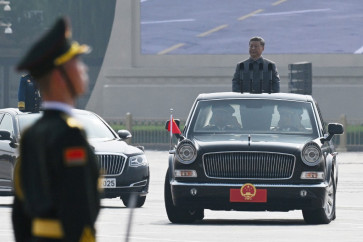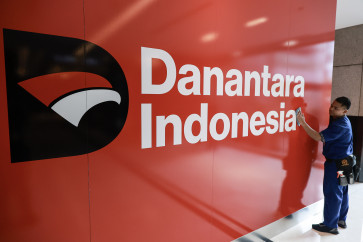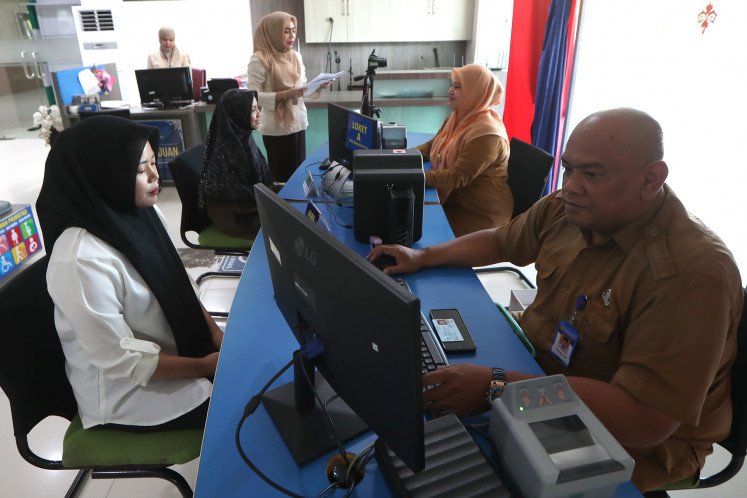Popular Reads
Top Results
Can't find what you're looking for?
View all search resultsPopular Reads
Top Results
Can't find what you're looking for?
View all search resultsThe mystery behind Ambon riots
A combination of sadness, concern, anger, irritation, impatience and emotions flushed through me when I read about the most recent riot that erupted in Ambon during the procession of the Obor Pattimura (the Torch of Pattimura), on May 15
Change text size
Gift Premium Articles
to Anyone
A
combination of sadness, concern, anger, irritation, impatience and emotions flushed through me when I read about the most recent riot that erupted in Ambon during the procession of the Obor Pattimura (the Torch of Pattimura), on May 15.
On the eve of the Pattimura Day, I went to bed with good hopes about Ambon after reading posts on social media from friends who were excitingly expecting the arrival of the Pattimura torch in Pattimura Park at the heart of Ambon city.
The next morning, however, I woke up to find that the procession went differently than most people had expected. What was supposed to be a happy event for people of different groups under the spirit of semangat Pattimura-Pattimura muda (the spirit of young Pattimuras), the procession turned into a riot reminiscent of the bloody conflict in 1999.
Following the development of the so-called “post-conflict” situation in the aftermath of the Ambon unrest, I have learned that there seems to be a repeating pattern in the statements of ordinary citizens on social media or government officials in newspapers.
Some of the similarities are: (1) a call for police and military to investigate the case, and take action against those who provoked the riot; (2) a call for the people of Ambon to exercise restraint in the face of provocation and (3) a call for Ambon people to take care of their neighborhood.
Behind these statements are underlying assumptions that are shared by most people in Ambon, including the local government officials. I would imagine that the assumptions would be: (1) the police and military have not done enough in addressing past cases and taking strong actions against those who provoked past riots; (2) there were provocateurs and the people of Ambon were provoked and could be provoked in the future and (3) if residents maintained security of their own area, they could contribute to prevention of riots.
A question arises as to the scope of the area to be taken care of. Could it be reduced to the neighborhood level or expanded to subdistricts, districts or even the whole of Ambon city?
This is an important point as it is closely related to how people see the group to which they belong and the borders between their group and others.
Indeed, there were people who ignited the latest Ambon riot, although it is not very clear whether they are part of Ambon community or not. The questions are always whether the people worked in a group or individually, whether they operated incidentally or were organized, and whether they are linked to local, national, regional, global economic, political or cultural power struggles.
Since they have yet to be identified, do they even exist at all? And if they do exist, why can’t they be found?
The answer lies in the first statement: calls for police and military investigations. The underlying assumption is there were not enough efforts to investigate and take action against a group or individuals who provoked riots in the past. In other words, finding the people responsible for last week’s unrest will depend on the investigation into previous riots.
Another critical question is why the military has to be involved in the investigation of the violence, as there is a clear division of labor between the police and the military.
There are indications that provocateurs were behind the repeated sectarian clashes in Ambon, while at the same time the failure to identify them will force Ambon people to stay on guard to protect their own neighborhood. This demonstrates a lack of trust within Ambonese society that may reinforce the gaps between them. Whereas trust, be it between individuals or groups, is crucial for peace building efforts in Ambon.
Hopes for people to take care of their own areas have sent the wrong message that public domains are not safe and that you will be safe and sound only in your own area or neighborhood. People will be encouraged to focus on their own domestic, private area, leaving public space unattended.
Building trust is more pressing in Ambon than pointing the finger of blame at people behind the violence, although it is important to note that building trust can only happen in a just and equal society (politically, economically and culturally).
If provocateurs do exist, as many believe, then the police have to capture them and unveil their motives. The people of Ambon are facing a huge challenge that requires everybody’s goodwill (and political will) to turn this “mission impossible” into a reality and put an end to the long history of riots. Sampe jua, enough is enough.
The writer is a PhD candidate at the International Institute of Social Studies at the Erasmus University, The Hague, The Netherlands.










